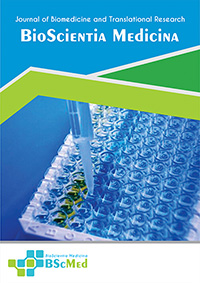Main Article Content
Abstract
Background: Triple negative breast cancer (TNBC) represents an aggressive subtype with limited targeted therapies and often poorer prognosis. Chemotherapy remains a cornerstone of treatment, yet its systemic effects, including hormonal alterations, are not fully elucidated. The role of progesterone in TNBC progression and its modulation by chemotherapy is particularly complex and warrants investigation. This study aimed to evaluate changes in serum progesterone levels following chemotherapy in TNBC patients.
Methods: A prospective cohort study was conducted at Dr. Moewardi General Hospital, Surakarta, involving 30 patients diagnosed with TNBC undergoing chemotherapy. Serum progesterone levels were quantified using the ELISA method before the first chemotherapy cycle and after the sixth cycle. Statistical analysis, primarily the Wilcoxon test, was used to compare pre- and post-chemotherapy levels.
Results: The cohort had a mean age of 49.13 ± 8.98 years. Prior to chemotherapy, progesterone levels varied: 53.3% were below normal (<0.5 ng/mL), 23.3% were normal (0.5-5 ng/mL), and 23.3% were above normal (>5 ng/mL). Following six cycles of chemotherapy, a significant decrease in progesterone levels was observed (p=0.020). The proportion of patients with below-normal levels increased to 63.3%. Overall, 10 patients showed decreased levels, 18 remained stable, and 2 showed increased levels. No significant correlation was found between progesterone level changes and baseline patient characteristics like age, menarche, or menopausal status.
Conclusion: Systemic chemotherapy significantly impacts progesterone levels in TNBC patients, leading to an overall decrease. Monitoring progesterone fluctuations during treatment may hold potential value for assessing therapeutic response or prognosis, warranting further investigation.
Keywords
Article Details
As our aim is to disseminate original research article, hence the publishing right is a necessary one. The publishing right is needed in order to reach the agreement between the author and publisher. As the journal is fully open access, the authors will sign an exclusive license agreement.
The authors have the right to:
- Share their article in the same ways permitted to third parties under the relevant user license.
- Retain copyright, patent, trademark and other intellectual property rights including research data.
- Proper attribution and credit for the published work.
For the open access article, the publisher is granted to the following right.
- The non-exclusive right to publish the article and grant right to others.
- For the published article, the publisher applied for the Creative Commons Attribution-NonCommercial-ShareAlike 4.0 International License.





